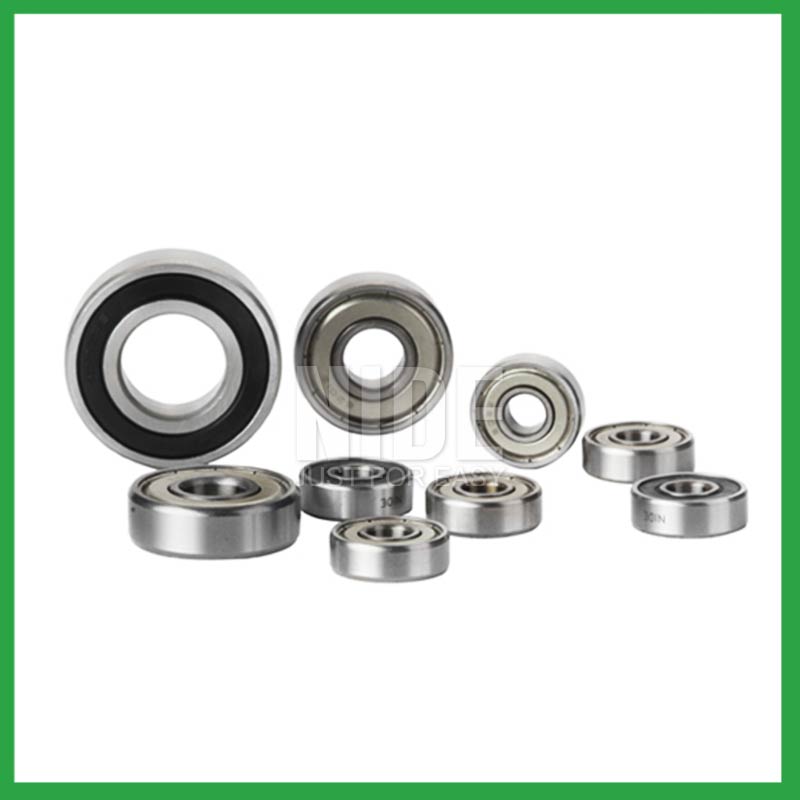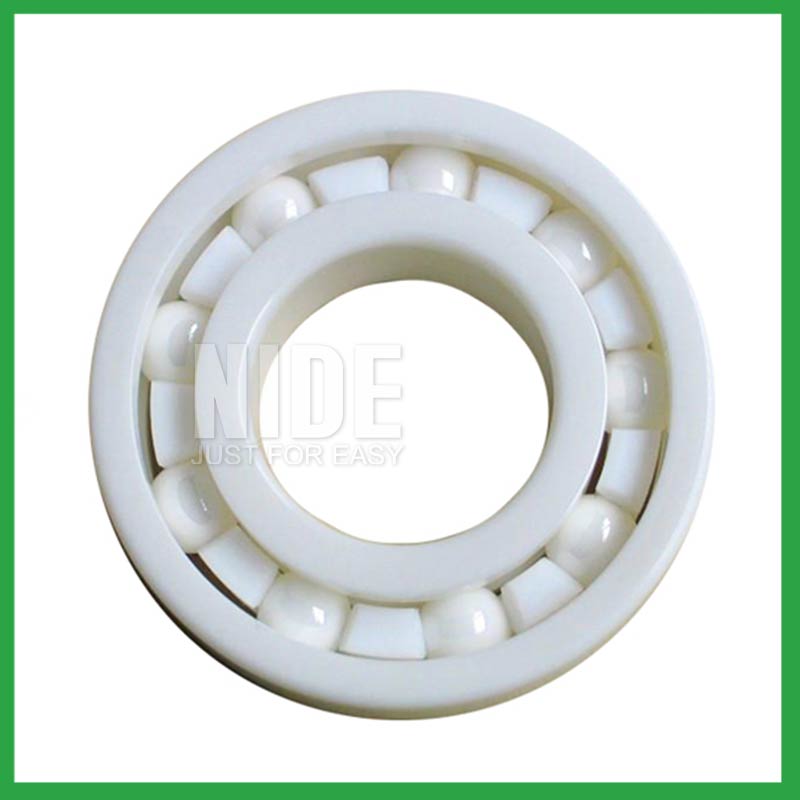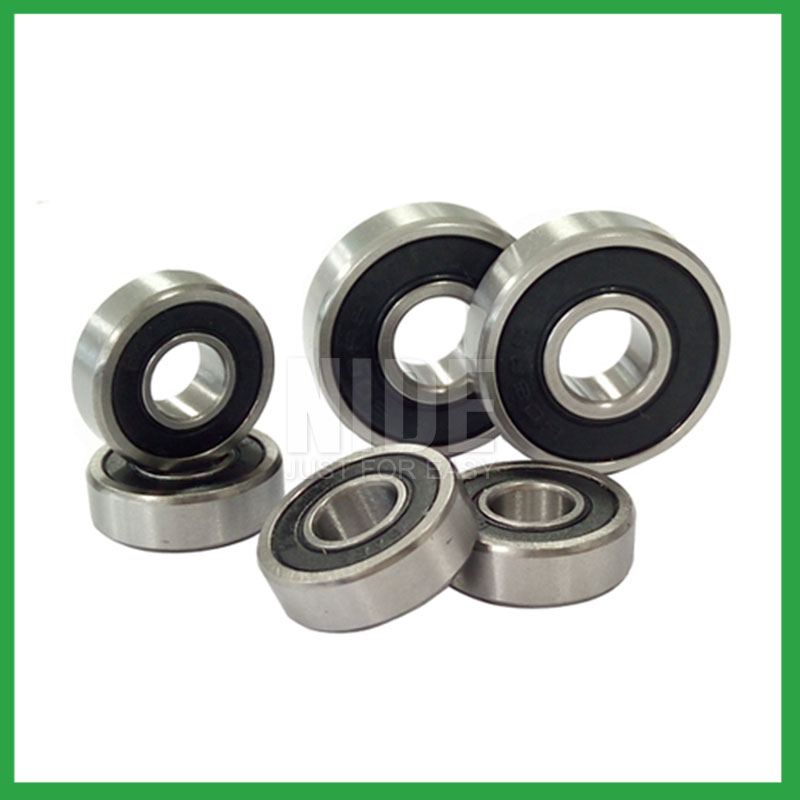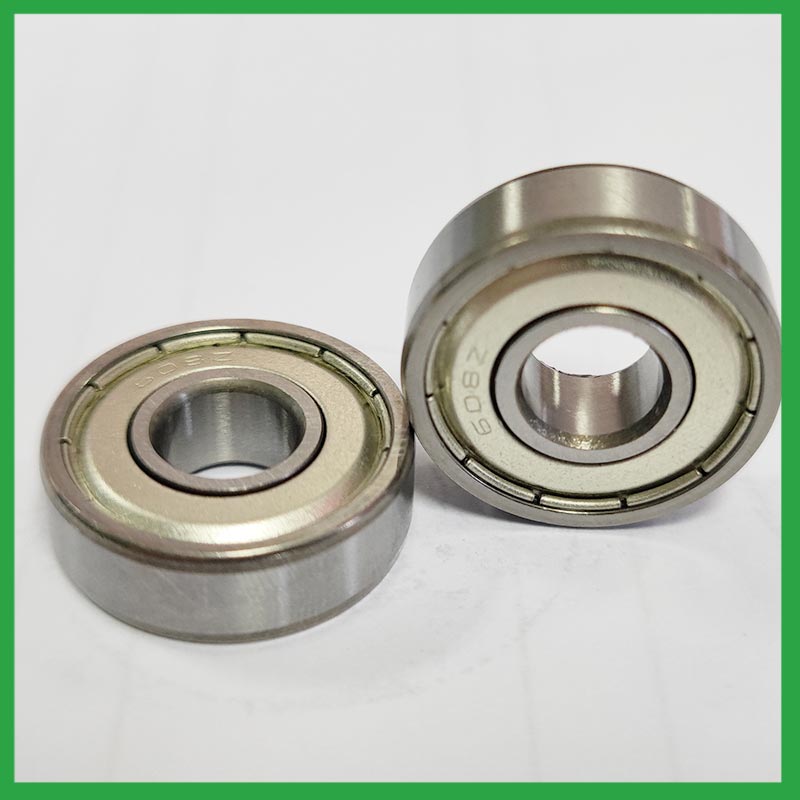PRODUCTS
CONTACT US
Ningbo Nide International Co., Ltd.
一一
· Contact person:Jack Zeng
· Mob/Whatspp/WeChat:0086-13738869026
· Email:emarketing@nide-group.com;marketing4@nide-group.com
· Add:No. 169, Wohushan Road, Daqi Subdistrict, Beilun District, Ningbo, China

Nide team could manufacture ball bearing as per customer’s drawing and samples.
If customer only has samples, we could also design drawing fo r our customer.
We also provide customized service.
Our ball bearing is widely applied the different industrials.
Haishu Nide International Co., Ltd is a professional manufacturer engaged in bearing research and sales. The factory covers an area of over 9000 square meters and has over 100 employees. The company has modern production equipment and advanced testing instruments. We produce deep groove ball bearings, spherical roller bearings, shaft,carbon brush,motor cover and lamination,insulation paper,commutator,thermal protector,magnet, etc. The bearing accuracy is P0, P6, P5, P4 levels, widely used in electric automotive motor,fan motor,washing machine motor,servo motor,air condition motor,compress motor,water pump motor. Passed ISO9001:2015 and CE status.
We adopt first-class production equipment and a comprehensive testing system, and hire excellent technical personnel for operation and management. Our bearings are now very popular in the United States, Canada, Türkiye, Russia, Argentina Sweden,Saint Pierre and Miquelon,Guatemala and other countries and regions.Nide wishes is to provide world wide customers with one-stop service for the motor manufacturing.

| Parameter | Information |
|---|---|
| Product Name | ball bearing components |
| Brand Name | NIDE |
| Place of Origin | Ningbo,Zhejiang,China |
| Material | ceramics, etc. |
| Structure | Deep Groove |
| Color | Customized Color |
| Delivery Time | 5-7days |
| Port | Ningbo/Shanghai |
| Export region | America,Asia,Europe |
| Export Country | India,Brazil,South Korea,Hungary,Anguilla,Qatar,Slovenia...etc |
| Application | food processing machinery, etc. |
| OEM/ODM | Yes |
| Size | Customized size |
| Stock | In Stock |
| Feature | Simple structure,Low Noise...etc |
| MOQ | 10 pieeces(Specific according to the model) |
| Certification | ISO9001,CE-stator coil lacing machine,CE-insulation paper inserting machine,etc |
| Supply Ability | 100000-500000 Piece/Pieces per Month |
| Lubricate | Oil Grease |
| Packaging Details | Suitable for sea transportation |
| Lead time (days) | 15-20 (To be negotiated) |
Please note: The above table data is for reference only. For specific information, please contact us.
ball bearing components can be used in household appliances, such as barrel machine spindle bearings,mixers,vegetable cutters,washing machines, etc; It can also be used in industrial fields, such as reducers,motors,weighing machines,weaving machine spindle bearings, etc.
During the installation process, pollution from dirt and wear media should be prevented;
Temperature and humidity should be controlled to avoid excessive temperatures during startup and operation;
It should be operated and lubricated in the correct reverse direction to avoid unnecessary damage.
Ball bearings have many advantages, making them highly competitive in the market.
Firstly, they are very durable and have good wear performance, making their service life longer than many other types of bearings.
Secondly, they are easy to install and can provide low friction performance in various applications.
Thirdly, they require a relatively low level of maintenance, making them cost-effective.
In addition, compared to many other types of bearings, their purchase cost is relatively low, making them an economical choice.




ball bearing components---FAQs Guide
2.Can ball bearing components be used in both vertical and horizontal orientations?
3.Can ball bearing components handle shock loads and high-impact conditions in heavy machinery?
4.What is a ball bearing?
5.Do ball bearing components come in various tolerance classes?
6.What are the advancements and innovations in ball bearing components technology that have emerged in recent years?
7.Are there ball bearing components designed for extreme temperature environments, such as cryogenic or furnace applications?
8.How do preload adjustments in ball bearing components affect their performance and suitability for high-precision tasks?
9.About ball bearing components,What about the lead time?
10.What are the standard sizes and dimensions of ball bearing components?
11.Can ball bearing components be used in vacuum or cleanroom environments, and what measures are taken to prevent outgassing or contamination?
12.How do manufacturers address concerns related to bearing noise and vibration in sensitive equipment?
13.Are there ceramic ball bearing components designed for specific applications requiring high-temperature or corrosion resistance?
14.As a ball bearing components manufacturer,can you supply samples?
1.Are there ongoing research and development efforts aimed at improving ball bearing components materials, designs, and lubrication techniques?
A custom ball bearing components can satisfy almost any customer’s needs. Your application may need a needle roller or ball bearing, a radial or angular contact design, a plain carbon steel bearing with anti-corrosion coatings or stainless steel, a thrust bearing or a spherical bearing, tight or loose radial play, sealed or non-sealed designs
2.Can ball bearing components be used in both vertical and horizontal orientations?
Sleeve Bearings: Sleeve bearings, also known as plain bearings, employ a simple yet effective mechanism. A cylindrical sleeve separates the rotating shaft from the stationary portion of the bearing, reducing friction and enabling smooth rotation. Sleeve bearings are characterized by their quiet operation, cost-effectiveness, and suitability for horizontal mounting orientations.
Ball Bearings: Ball bearings introduce small metal balls between the moving parts, providing enhanced durability and reduced friction. This design allows for smoother and more efficient rotation, making ball bearings well-suited for high-performance applications and vertical installations.
3.Can ball bearing components handle shock loads and high-impact conditions in heavy machinery?
As a general rule, ball bearing components are used at higher speeds and lighter loads than are roller bearings. Roller bearings perform better under shock and impact loading. Ball bearings tolerate misalignment better than roller bearings do. Roller bearings can handle heavy combined radial and thrust loads.
4.What is a ball bearing?
A ball bearing is a type of rolling-element bearing that uses balls to maintain the separation between the bearing races.
The purpose of a ball bearing is to reduce rotational friction and support radial and axial loads. It achieves this by using at least two races to contain the balls and transmit the loads through the balls. In most applications, one race is stationary and the other is attached to the rotating assembly (e.g., a hub or shaft). As one of the bearing races rotates it causes the balls to rotate as well. Because the balls are rolling they have a much lower coefficient of friction than if two flat surfaces were sliding against each other.
Ball bearings tend to have lower load capacity for their size than other kinds of rolling-element bearings due to the smaller contact area between the balls and races. However, they can tolerate some misalignment of the inner and outer races.

5.Do ball bearing components come in various tolerance classes?
Bearing tolerances are standardized by classifying bearings into the following six classes (accuracy in tolerances becomes higher in the order described): 0, 6X, 6, 5, 4 and 2.
6.What are the advancements and innovations in ball bearing components technology that have emerged in recent years?
Significant advancements have been made in ball bearing components steels over the years. Modern, ultra-clean bearing steels contain fewer and smaller non-metallic particles, giving ball bearings greater resistance to contact fatigue.
7.Are there ball bearing components designed for extreme temperature environments, such as cryogenic or furnace applications?
High temperature ball bearing components use specialized lubricants to stand up to high temperatures. Grease-packed bearings are pre-filled with fluorine grease for high temperatures, while YS and SJ bearings use molybdenum disulfide (MoS2) solid lubricant to withstand temperatures up to 350°C and 400°C respectively.
8.How do preload adjustments in ball bearing components affect their performance and suitability for high-precision tasks?
Benefits of Preloading a Bearing
Optimizes the ball spin to roll ratio.
Increases the rigidity of an application.
Protects from excessive ball skidding.
Decreases application vibration and sliding friction.
High running accuracy (even if load conditions keep changing)
Increases bearing load capacity.

9.About ball bearing components,What about the lead time?
3-7 days for samples, 3-4 weeks for mass production.
10.What are the standard sizes and dimensions of ball bearing components?
ball bearing components size charts are widely available, and can be used to find the measurements of a specific bearing. Series 6200 and 6300 are the most commonly used, and typically range from 10 x 30 x 9 mm (. 394 x 1.181 x . 354 in) to 150 x 320 x 65 mm (5.906 x 12.598 x 2.559 in).
11.Can ball bearing components be used in vacuum or cleanroom environments, and what measures are taken to prevent outgassing or contamination?
Bearings specify stainless steel for vacuum or cleanroom applications as stainless steels used for the rings, balls and retainer exhibit low outgassing. They usually supply open or shielded stainless steel bearings as vacuum bearings as these will outgas less than a nitrile rubber sealed bearing.
12.How do manufacturers address concerns related to bearing noise and vibration in sensitive equipment?
From a ball bearing components manufacturing perspective, a low noise or vibration rating is achieved by paying attention to the surface finish of the raceways and balls, their roundness, and selecting the correct cage design. Finely filtered low noise greases can also be used to reduce vibrations.

13.Are there ceramic ball bearing components designed for specific applications requiring high-temperature or corrosion resistance?
Ceramic ball bearing components are a special type of bearing made of ceramic materials, offering superior wear resistance, corrosion resistance, and high-temperature performance. They provide excellent performance in applications requiring high speeds, high temperatures, and resistance to corrosion.
14.As a ball bearing components manufacturer,can you supply samples?
Sure, samples can be provided free of charge, and the buyer pay the postage of the sample.

